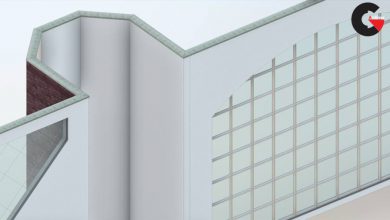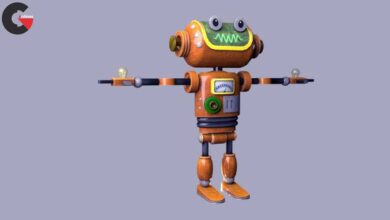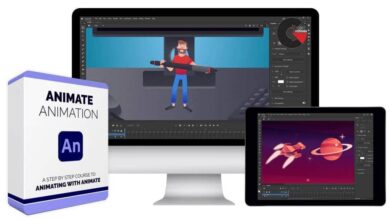FXPHD – MYA218 Bifrost Procedural Effects Platform
Bifrost Procedural Effects Platform
MYA218 Bifrost Procedural Effects Platform : Bifrost is a procedural effects platform that lets you generate photo realistic liquid simulations in Maya. Developed from the renowned Naiad technology, which has been used in many of the best blockbuster feature films including large scale water effects, Bifröst was designed to provide artists with powerful and scalable liquid simulation tools using simple and efficient workflows. In this course we will learn how to Combine Bifröst accelerators, particle-based droplets and collision objects to create all types of liquids, like splashes and waves then preview the effect interactively in Viewport 2.0 in Maya. For any FX TD or Maya Generalist Bifröst will become an invaluable tool to create realistic fluid simulations at high detail. During this course we will be covering all the main areas of the new software including, background simulating, fluid containers, emitters, colliders, killplanes, setting attributes, Bifröst droplets, diagnostic colours, painting Bifröst attributes, adjusting shader attributes, increasing accuracy and resolution, meshing and rendering simulations. As well as tips on how to iteratively work according to directors comments to final a shot. By the end of the course you’ll have a firm understanding of Autodesk Bifröst and how to produce amazing high detail simulations efficiently.
- 1-Introduction to fluid simulation for Computer Generated Visual Effects. Overview of fluid simulation terminology. Explanation of workflows for different fluid simulation software. Advantages and disadvantages of fluid simulation usage.
- 2-Introduction to Bifrost Procedural liquid simulation solver. How to import a Bifrost demo scene. Overview of workflow for Bifrost simulations in Maya Setup of example scene and rundown of Bifrost attributes.
- 3-How to setup a new Bifrost liquid simulation using geometry. How scene scale effects your water simulation in Maya. How to enable and disable the Bifrost simulation and collision objects. How to change the voxel size of the simulation to adjust its detail and viewing the simulation in the viewport 2.0.
- 4-Overview of Bifrost Killplanes and why they are important. How to work with Bifrost Emitters. How they are different to particle emitters and what their purpose is in Bifrost workflows.
- 5-Working with Bifrost Colliders. Overview of setting up the collider objects in a Bifrost simulation in Maya. Working with Bifrost Accelerators. Explaining what accelerators do and how to use them in Bifrost simulations.
- 6-Working full scale with the bridge chase and destruction scene.
- 7-How to paint Bifrost attributes. Adjusting the attributes of a Bifrost simulation by using Maya’s paint attributes tools. How to work with Bifrost droplets. Understanding how Bifrost droplets work and how memory overhead can be reduced by adjusting the settings for droplets in Bifrost simulations.
- 8-How to generate a Bifrost user cache for a final simulation. A Bifrost cache is a disk based saved setup for a simulation which can be rendered on a render-farm or rendered locally. How to setup and adjust shader attributes. You can manipulate the shader attributes to change the look of a Bifrost simulation. This can involve adjusting the different render passes that are output for the simulation, or changing the way particle data is handed over to the rendering engine to compute effects like foam or spray colour differences to the main water or fluid surface.
- 9-Meshing and rendering your scene. The meshing of particle fluid simulations is a very geometrically heavy process and is best done at rendertime. Also the motion blur of fast moving liquid particles is very important, and artists must setup their scenes so that not only is there areas of smooth unbroken liquid but also sprays of highly detailed motion blurred droplets.
- 10-How to iterate your simulations for the Director. One of the hardest and most challenging aspects of a highly detailed fluid simulation is how to plan out and “direct” the movement of the fluid to do what the director wants after the initial “first pass” is completed. This lesson will take us through the process of iteratively changing the simulation based on a directors feedback notes.
lB6MwSwNNIYYHz66UqInBRH/video%20g/30844
Direct download links 6 GB :
Direct download link reserved for subscribers only This VIP
Dear user to download files, please subscribe to the VIP member
- To activate your special membership site, just go to this link and register and activate your own membership . >>>register and activate<<<
- You can subscribe to this link and take advantage of the many benefits of membership.
- Direct downloads links
- No ads No waiting
- Download without any limitation ، all content in website
CGArchives Is The Best
Review
Review
Review this tutorial






